Recently in Prints, Drawings, Paintings Category
Four large colonial prospects, or prospectus views, were engraved at various times during the pre-revolutionary era in the United States. The view of New York was first, then Boston, Charleston, and finally Philadelphia. Each includes a bustling river view with the major architectural landmarks depicted in considerable detail. Although they look similar, they have different artists, printers, and publishers, and do not constitute a set.
South Prospect of New York was designed by William Burgis, engraved in London by John Harris, and issued in 1717. The final print measured over six feet in length, printed from four separate copper plates. The harbor is seen from Brooklyn Heights and might better be called a southeast prospect. The occassion depicted is thought to be a celebration of King George’s birthday.
Burgis’s print was reissued in 1746 by London printseller Thomas Bakewell, with an updating of the skyline. In 1761, the Bakewell reissue was once again revised and re-engraved in a reduced format for the Auguat 1761 issue of London Magazine. This is the print we hold at Princeton, seen above.
In October of that same year, London Magazine printed a prospect of Philadelphia. The original was designed by George Heap in 1754 in the style of William Burgis, but Heap fell ill and died before it was completed. The surveyor for the project, Nicholas Scull, had the engraving finished in London by Gerard Vandergucht. This view measured over seven feet, out-doing Burgis by a foot. A smaller version was completed by Vandergucht in 1755, which included a small section of the Jersey shore in the foreground.
A number of variations of the Scull and Heap view exist, usually based on the second second state. Princeton’s copy, published by London Magazine, was a gift of Alfred E. Kay, class of 1912.
For more than 600 years, artists have been experimenting with spatial illusion to the great delight of the viewing public. A wonderful timeline of experimentation in perspective theory and spatial illusion has been mounted by the Getty at: http://www.getty.edu
/art/exhibitions/geometry/timeline.html.
One optical technique is the anamorphic or distorted image, meant to be understood only when viewed at an acute angle or through a reflective cylinder. Some well-known examples of anamorphosis in art are the drawings in Leonardo da Vinci’s notebooks or the skull in the foreground of Hans Holbein the Younger’s painting The Ambassadors (1533, National Gallery, London). More recent examples can be seen painted on the stairs leading up to the Philadelphia Museum of Art or the stairs leading out of Pennsylvania Station in New York City.
Last fall, American artist Chuck Close created his first two anamorphic portraits at Two Palms studio in New York, http://www.twopalms.us/, utilizing a complex system of laser engraving and embossing. His Self-Portrait (Anamorphic), now in the collection of graphic arts, is a perfect example of the artist’s belief that “how an artist chooses to do something is often as important as what the artist chooses to do.” The image begins, like all his work, with a straight photographic portrait. His friend Phillip Glass once commented that for Close, the photograph “is simply the carrier for the idea; the occasion for the work to take place.”
Close divided the photograph into sections and painted each section abstractly and yet, when viewed at a distance the image reads as a realistic portrait. Then, a set of these portraits was distorted into a circular pattern, which was engraved by laser onto an acrylic plate. Once inked, the plate was pressed into hand-made paper using an overhead hydraulic press that can exert up to 750 tons of vertical pressure evenly on the paper and plate. The final image can only be seen realistically through a polished cylinder placed in the center of the design.
The graphic arts division at Princeton holds a wonderful collection of optical devices together with a collection of the optical prints and photographs to be used with each device. A small selection is currently on view on the second floor of Rare Books and Special Collections, Firestone Library.
La Orquesta: Periódico Omniscio, de Buen Humor y con Cariaturas, often referred to as the Mexican Punch, was a satirical journal published out of Mexico City between 1861 and 1877. Graphic Arts holds 106 consecutive issues, each consisting of four pages of text and a full-page lithographic caricature.
Most of these caricatures were drawn by painter and social satirist Constantino Escalante (1836-1868), who was also one of the journal’s editors. Orquesta’s constant criticism of the Mexican government led to Escalante being arrested and jailed on more than one occasion.
For more information on Escalante, see Salvador Pruneda, La caricatura como arma política; caricaturas anónimas y de los artistas: J. G. Z., Constantino Escalante [et al.] (México, 1958). Firestone Library, NC1320 .P944
This political cartoon sets Democrat Stephen A. Douglas against Republican Abraham Lincoln during the presidential campaign of 1860. From left to right, the figures represent John Bell of Tennessee (Constitutional Union party candidate); John A. Wise (influential Democratic governor of Virginia); Douglas; James Buchanan (Democratic incumbent president); John C. Breckenridge (Buchanan’s vice-president and Democratic candidate); and Lincoln.
An interpretation of the scene comes from Americana dealer William Reese:
The cartoon is a play on the word “stump,” serving as a colloquial expression for both campaigning and a wooden leg. In “taking the stump” to campaign, Douglas is handicapped by a pegleg; in a dialogue balloon he explains his condition to Bell and Wise by stating that he “fell over a big lump of Breckenridge, and have been very lame ever since.” In turn, Breckenridge has his right foot and lower leg wrapped in bandages, and Buchanan presents him with a pegleg, telling his Vice President, “Here, Breck, as Dug [Douglas] has taken the stump, you must stump it too.” Breckenridge, perhaps alluding to his poor showing at the Democratic Party’s May convention, replies, “I suppose I must, but I know it will be of no use, for I feel that I haven’t got a leg to stand on.” Lincoln, leaning against a symbolic split-rail fence and the only figure depicted in casual dress, declares to the others, “Go it yet cripples! Wooden legs are cheap, but a stumping won’t save you.”
More information: Bernard Reilly, American Political Prints 1766-1876 (1991) GA Oversize E183.3.R45 1991Q and Currier & Ives: a Catalogue Raisonne (1983) GA Oversize NE 2312.C8 A4 1983Q.
The print on the left has no signature or title within the design as is common with Japanese woodblock prints. It has been attributed to Katsushika Hokusai (1760-1849), whose career spanned sixty years, producing more than 30,000 prints. He was not only a master of Ukiyo-e (pictures of the floating world), but actively studied Chinese and Western techniques, in the last years of the Edo period.
The image is of an Ama, or fisher-woman who specialized in diving for abalone (awabi). I have not been able to find this work in any of the several dozens of volumes on Hokusai in Marquand Art library, nor was it included in the Smithsonian’s extensive retrospective of the artist’s prints and books. Their website is a wonderful source of biographical and stylistic information: http://www.asia.si.edu/exhibitions/online/hokusai/launch.htm. If anyone has information we would be interested in hearing from you.
Hokusai, a child prodigy, is best-known for a series of views of Mount Fuji, including 46 unique scenes at different times of day and seasons of the year. Both Hokusai’s Ama and selections of the Mt. Fuji series will be on view in our gallery next year when we exhibit the Gillett Griffin collection of Japanese prints on deposit in the Graphic Arts division, Rare Books and Special Collections, Princeton University.
As a boy, James Lackington (1746-1815) worked as a meat pieman. As an adult, he became one of the most successful booksellers in all of London. If you were looking for literature in the late 18th-century, you would have made your way to No. 32 Finsbury Place South in the southeast corner of Finsbury Square. At that corner, you would check to see if the flag on the huge circular dome of the Temple of the Muses was flying. That way, you knew if Lackington was in residence inside his remarkable bookshop. Books were sold for cash, at prices listed in Lackington’s annual printed catalogues, such as A Catalogue of Books, for the Year 1803, Containing Eight Hundred Thousand Volumes in all Languages and Classes of Learning, the Whole of which are Marked at Low Prices, for Ready Money, and are Warrented Complete. (Rare Books, Ex 2005-0187N). After Lackington’s death, his son continued the business until the shop burned down in 1841.
A sketch of Lackington’s bookshop was originally created by Thomas Shepherd as an illustration to James Elmes, Metropolitan Improvements; or London in the Nineteenth Century: Displayed in a Series of Engravings… by Mr. Thos. H. Shepherd (London: Jones and Co., 1828). (Rare Books (Ex) 1465.323.11). Shepherd’s original is now in the collection of the Guildhall Library. William Wallis reproduced that scene in an etching, which can be found in several formats, with and without color. The print was published in The Repository of Arts, Literature, Commerce, Manufactures, Fashions and Politics. London: R. Ackermann, 1809-1815 (Graphic Arts Collection 2006-3077N)
Upcoming exhibition: Notre Livre: À toute épreuve. A Collaboration between Joan Miró and Paul Éluard
To create this book, Miró cut over 233 woodblocks working over the better part of eleven years. He used planks of wood collaged with plastic, wire, old engravings and bark paper to achieve images that practically dance across the page. "I am completely absorbed by the damn book," wrote Miró to his publisher, Gerald Cramer, "I hope to create something sensational. . . ." The final volume has a brilliance of invention and a vitality of form and color, rarely found inside the cover of a book.
The exhibition opening will be celebrated on Sunday, March 9, 2008, with Elza Adamowicz, Professor of French and Visual Culture, School of Modern Languages, Queen Mary, University of London, presenting the talk "The Surrealist Artist's Book: Beyond the Page" in the Betts Auditorium, School of Architecture, at 3:00. A reception will follow at 4:00, in the Leonard L. Milberg Gallery for the Graphic Arts on the second floor of Firestone Library.
In the gallery, we will offer English language translations of the poetry, some by the Irish writer Samuel Beckett, who was a great admirer of Eluard's work. Here is a sample:
| L'univers-Solitude 2 Villages de la lassitude Où les filles ont les bras nus Comme des jets d'eau La jeunesse grandit en elles Et rit sur la pointe des pieds. Villages de la lassitude Où tous les êtres sont pareils. Paul Eluard | Universe-Solitude 2 Villages of weariness Where the arms of girls are bare As jets of water Where their youth increasing in them Laughs and laughs and laughs on tiptoe. Villages of weariness Where everybody is the same Translation by Samuel Beckett |
The official press release for the exhibition sets the stage:
In order to market the moderne interior design aesthetic on the rise in the 1920s, French publishers produced limited-edition portfolios using a traditional technique--known in France as pochoir. The technique, which involved the hand application of color to a print using a series of carefully cut stencils (pochoirs), produced luminous images ideal for promoting the new approaches to interior design. The exhibition brings to light the tensions between traditional and modern design that existed in the period, and provides design solutions that will delight today's audiences.
Dozens of books, portfolios, and journals printed in the pochoir technique remain available to Princeton University readers and can be seen in the reading room of rare books and special collection. Among these:
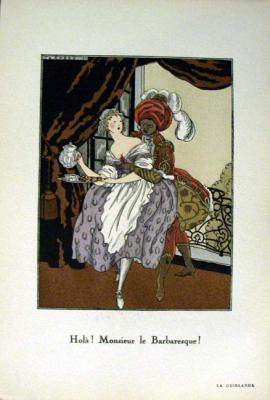
La Guirlande is one of the rarest of the Art Deco magazines with pochoir plates by Barbier, Brunelleschi, Taquoy, Vallée, Bonotte, Domergue, and others, printed by Jean Saudé.
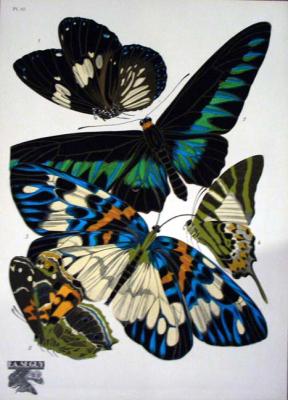
The stunningly colorful Papillons holds 20 pochoir prints illustrating a total of 81 butterflies. The purpose of the volume, beyond creating something of astonishing beauty, was to record rare or exotic specimens from museums and privates collections that would inspire decorative arts designers. Séguy produced eleven albums of illustrations and pattern, offering examples of design for textiles, ceramics, wallpaper, advertisements, and other utilitarian applications.
Other images from our Pochoir collection can be seen at: http://libweb5.princeton.edu/visual_materials/pochoir/p/ThumbnailFrame.htmlThis unsigned engraving, attributed as after the Swiss artist Davide Antonio Fossati, shows four boys playing a game of leap-frog; presumably the earliest illustration of this sport. It is one of six plates in Passeri’s discourse on the drying up of wit and entertainment at the time, which he dedicated to Neptune. If anyone has a theory on why Neptune, I’d love to hear about it.
Passeri, the Abbate of Pesaro, was an antiquarian, a philologist, and an archeologist. Each of the five discourses or sections describe a different form of boredom and are illustrated with a beautiful engraving suggesting a way to combat this fatigue. The book was written as a carnival satire, and partly presented to the academy of Pesara.
Besides publishing Della Seccatura Discorsi, Passeri has the distinction of having published the greatest catalogue of fake Roman terracotta lamps ever produced. The Marquand Art and Archaeology Library at Princeton University holds several of Passeri’s studies on Etruscan vaces:
Passeri, Giovanni Battista, 1694-1780, Lucernae fictiles Musei Passerii, 1739, Location: Marquand Library (SAX): Rare Books, Call Number: NK3835 .P26f
Passeri, Giovanni Battista, 1694-1780, Mvsevm etrvscvm, exhibens insignia vetervm Etrvscorvm monvmenta aereis tabvlis cc. nvnc primvm, 1737 Location: Marquand Library (SAX): Rare Books, Call Number: N5740 .G67q
Passeri, Giovanni Battista, 1694-1780, Serie di vasi tratta da vari musei d’Italia … rãpresentanti le pitture degli Etruschi, 1787, Location: Marquand Library (SA), Call Number: NK3845 .P26f
Passeri, Giovanni Battista, 1694-1780, Thesavrvs gemmarvm antiqvarvm astriferavm quae e complvribvs dactyliothecis selectae aereis tabvlis cc. inscvlptae observationibvs inlvstrantvr adiect, 1750, Location: Marquand Library (SAX): Rare Books, Call Number: NB1268 .G67q
On February 21, 1815, six militia men (all of the Tennessee militia) were court-martialed and executed while under General Andrew Jackson’s command. When Jackson ran for President of the United States in 1828, the incident was used against him by those in favor of his opponent, John Quincy Adams.
This satirical print depicts editor-publisher John Binn, who published a number of handbills that accused Jackson of arbitrary executions, as well as other violent acts. The anger campaign somewhat back-fired and led to pro-Jackson handbills and cartoons, such as this one. Binn is seen here supporting a load of coffins on his back, along with the figures of Henry Clay on the left and the incumbent President John Quincy Adams on the right. Binns: “I must have an extra dose of Treasury-pap, or down go the Coffins Harry, for I feel faint already.” Clay: “Hold on Jonny Q—for I find that the people are too much for us, and I’m sinking with Jack and his Coffins!” Adams: “I’ll hang on to the Chair Harry, in spite of Coffin hand-bills Harris’s letter Panama mission or the wishes of the People.”
This led to a full-blown mud-slinging campaign on both sides. Adams was accused of misusing public funds (he bought a chessboard and a pool table). In addition to the murders, Jackson was accused of adultery (his wife’s divorce papers were not finalized before their marriage). In the end, Jackson’s popularity grew and he won the election. The final electoral vote results were: Jackson 178, Adams 83.
This image first appeared in Henry Mayhew’s 1851 or The Adventures of Mr. and Mrs. Sandboys and Family, Who Came Up to London to ‘Enjoy Themselves,’ and to See the Great Exhibition (London: David Bogue, [1851]). The work includes ten etchings by George Cruikshank and a woodcut title page reproducing the design on the wrappers of the parts. Cruikshank is making fun of the approximately 25,000 people who attended the exhibition, which was conceived to demonstrate Britain’s status as an industrial power.
According to Cruikshank’s catalogue raisonne by Albert Cohn, Mayhew’s text was originally issued in eight parts in green wrappers, February-September 1851, and on completion in light blue stamped cloth, with a gilt design upon the spin. In the early issues there is an error in the pagination at p. 63, where in subsequent issues a leaf of advertisements is inserted to make good the omission on the numbering of the pages. The set was sold in parts for ten pounds and in blue cloth for four pounds.
The commercial designer James Meyer created a series of broadsides, such as this one, as memorials to President James A. Garfield who was assasinated in September 1881. A smaller scale print was also commissioned by E.G. Rideout & Company and included in an issue of Household Journal (also called Household Guest Magazine) that same year. This is possibly in response to the fear of a nation-wide panic over two presidents being killed in the short span of 16 years.
Thomas Ayres, a native of New Jersey, was the first artist to create an image of California’s beautiful Yosemite Falls for publication. The print was commissioned by James Mason Hutchings, publisher of Hutchings’ California Monthly. Traveling with three other men, Ayres and Hutchings entered Yosemite in June 1855. The group stayed in the area for five days and Ayres completed a number of drawings. Later, Hutchings had the sketches transferred to stone by the San Francisco artists, Kuchel and Dresel, and the stones printed by Britton and Rey. This view of the high falls appeared for sale in October 1855.
Hutchings also produced a pictorial letter sheet called Hutchings’ Panoramic Scenes and it has been suggested by William Reese that this copy of the Yo-Hamite print may have been created as a promotional display to promote Hutchings’ letter sheet. The print’s text reads “This magnificent scene is situated in the Yo-Hamite Valley near the source of the middle fork of the River Merced, Mariposa County California. It is the highest waterfall in the world - rushing over the precipice, at one bold leap it falls 1,300 feet, & the whole hight [sic] from valley is 2,300 feet.”
The following year, Ayres made a second trip to Yosemite and wrote about it in the Daily Alta California: “Upon another occasion we rode down the valley some six miles, and crossing the picturesque ford where the Mariposa trail enters the valley, ascended the mountain, reaching a point on the trail some fifteen hundred feet above the river. From here the traveler obtains the most complete general view of the entire valley… . To the right descends the Cascade of the Rainbow in all its beauty, giving life and expression to the scene, while the Two Domes bound the dim distance. All, all is as Nature has made it, fresh and beautiful from the hand of the Creator. On the glorious Fourth we were treated to a salute from Nature’s artillery. The effect of a thunderstorm in the valley was such as words cannot describe.
From crag to crag / Leaped the live thunder— / Not from one lone cloud, / But every mountain then had found a tongue.
… The time passed like a dream, and it was with regret that we left the beautiful Valley of the Yohemity, bound on an exploring trip to its head waters, far among the snow-clad peaks of the Sierra Nevada, of which more anon.” —Thos. A. Ayres, “A Trip to the Yohamite Valley,” Daily Alta California, 7, no. 207 (August 6, 1856).
Ayres’s drawings were exhibited in New York City and he was hired by Harpers Weekly to illustrate several articles on California. Sadly, his career was cut short in 1858, when the schooner he was riding to San Francisco capsized and Ayres was drowned.
At the beginning of the 19th-century, François-Séraphin Delpech (1778-1825) ran the most popular lithographic print shop in Paris. Delpech not only made beautiful lithographic prints from his own designs, but printed lithographs after designs by other artists, and sold these prints in his shop. Vernet’s print shows the front of Delpech’s shop, with potential buyers looking over the new work, while a young man exits the shop carrying a lithographic stone on his head.
Lithography was a relatively new art form, invented by Alois Senefelder (1771-1834) in Germany around 1798. In 1811, Senefelder published The Invention of Lithography, which was soon translated into English, French, and Italian, and the popularity of the technique soared. Senefelder’s book can be found in rare books and special collection, (GARF) NE 2420.S53.
Exactly ninety years ago, John Sloan, Marcel Duchamp, and four others climbed to the top of Washington Square Arch and proclaimed it the “free and independent republic of Washington Square.” That same year Sloan immortalized the Golden Swan saloon, better known as the Hell Hole or the Bucket of Blood, in an etching; shown here. Not only was the artist a frequent visitor to the saloon, but his studio was directly across the street and his 11th floor window looked down on the life-size, gilded swan that hung over the front door.
The artist described the scene in his diary, “The back room of Wallace’s … was a gathering place for artists, writers, and bohemians of Greenwich Village. The character in the upper right hand corner of the plate is Eugene O’Neill.”
The Wallace he refers to was Thomas Wallace, the proprietor of the bar and a former prizefighter. The figure in the back right is playwright Eugene O’Neill, who, as Sloan documents, was a regular to the Golden Swan. O’Neill also memorializes the bar by using it as the setting for his play The Iceman Cometh.
Today, the southeast corner of the intersection Fourth Street and Sixth Avenue has been transformed into a small park, known affectionately as the Golden Swan Park.
Franz Hogenberg was a painter, printmaker, and publisher during the late renaissance. By the time he settled in Cologne in the 1570s, he had already begun a chronicle of the Dutch Revolt, also known as the Eighty Years’ War, through a massive series of engravings. The events depicted in these prints pre-date the protestant revolt, beginning with scenes from the 1530s and continue well into the 1600s. Although Hogenberg died some time around 1590, his son Abraham took over the work and completed the project.
Father and son published their Geschichtsblätter (history papers) in various forms during their lifetime but happily, the entire work was reissued in a 1983 facsimile edition by Fritz Hellwig. [GARF Oversize D231 .H64 1983f] The series includes battle scenes on land and sea, portraits of the major figures, maps, ransacking of churches, hangings, elections, elegant parades, and brutal slaughters. When seen in chronological order, the prints take the viewer on an almost week-by-week journey through 16th- and 17th-century Dutch history.
Princeton University library is fortunate to have a large set of these engravings currently on deposit in the graphic arts collection. The set of 157 prints begins with the title plate of the Geschichtsblätter and ends with a scene in 1610. To search the prints, use the Visuals database at: http://libweb5.princeton.edu/RareBooks/database.asp
The other day I was looking for books by the botanical artist Priscilla Susan Bury (1799-1872) in our library catalogue. I now understand that one must first search under her husband Edward, where you will find a listing for Bury, Edward, Mrs. This will be Priscilla.
Born Priscilla Falkner, in Rainhill, Lancashire, Mrs. Bury had no academic training in either Art or Botany. She grew up drawing plants raised in the greenhouses of her family home east of Liverpool. In 1829, she proposed to a few friends that she publish these drawings in a book called simply Drawings of Lilies. The drawings were to be lithographed and the book to be sold for 5 guineas.
Amazingly, two years later the first of ten fascicles was indeed published, but with a new title and a new printing process. Now called A Selection of Hexandrian Plants, the job of reproducing Bury’s drawings was taken over by Robert Havell, Jr. (1793-1878). He used the same aquatinting process he was concurrently using to complete John James Audobon’s Birds of America. Like Audobon’s project, Havell reproduced Bury’s drawings on large plates (64 x 48 cm.) printed in vibrant colors and then, later finished by hand in watercolor. Havell was also the book’s publisher and Audubon was listed among its subscribers. It is unclear whether Bury subscribed to Audubon’s book.
This engraving was designed by Georg Balthasar Probst (1732-1801) to emphasize architectural perspective, so that when it was viewed through the lens of a zograscope the picture would appear to have great depth and dimension. Probst was famous for this kind of print, known as Vue d’Optique print or perspective print, and his Augsburg workshop produced more than 300 views, usually with captions in four languages.
The scene includes book binders, book illustrators, and book sellers juxtaposed with classical allegorical figures. Note in particular the ship in the distant center, ready to carry the finished volumes out into the world.
Bernhardt Wall, sometimes called the American William Blake, was born in Buffalo, New York on December 30, 1872. He worked as a commercial illustrator in New York and Buffalo, making a name for himself with a series of popular, comic postcards. In 1915 Wall took a trip to the Southwest and used the sketches he made to create a group of copper-plate etchings. Wall printed them in an edition of 50 and bound them into small volumes. He made the unusual choice of also printing the text from the copper-plates rather than letterpress, saving the need to print each sheet twice. The innovative volumes proved a great success and a turning point for his career.
Wall became not only author and artist, but designer, printer, binder, publisher and distributor of little books. Success allowed him to travel widely, in particular the American Southwest, and at the height of his career he kept working studios in New York, Houston (TX), Lime Rock (CT), and Sierra Madre (CA).
OCLC reports 141 books by Wall (Princeton University Library owns nine) including two completely etched magazines he attempted. This first, Wall’s Etched Quarterly, lasted through only three volumes in 1921. Later, when Wall moved to Lime Rock, Connecticut, he tried again with The Etched Monthly, which ran from 1928 to 1929. Wall’s neighbor in Lime Rock was the master printer and paper historian Dart Hunter, with whom Wall became great friends.
There are several issues of Wall’s Greenwich Village, each of the same set of images. The first appeared in 1918 in an edition of 100 copies. Online sources offer no evidence of a second edition, but in 1921 Wall published 50 copies of a “third state” (Princeton owns copy no. 7), using the fine art term to indicate that the plates had been slightly alerted. A third edition was released in 1947 limited to 50 copies. A complete bio-bibliography has been written by Francis J. Weber, entitled Following Bernhardt Wall (1974).
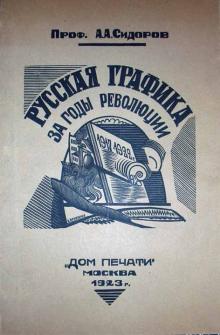
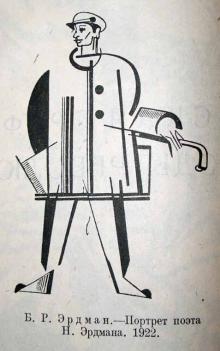
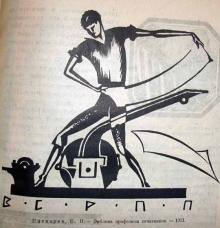
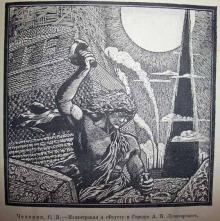
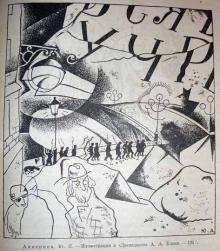
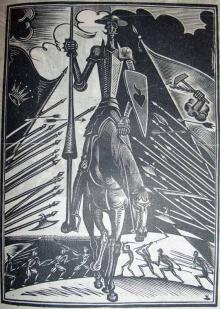
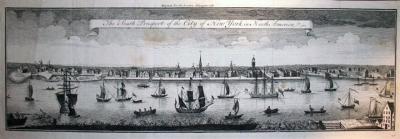
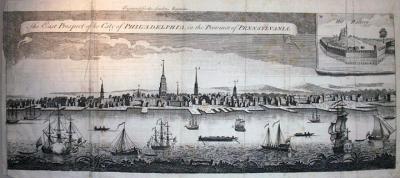
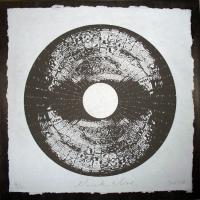
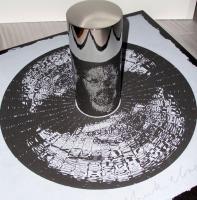
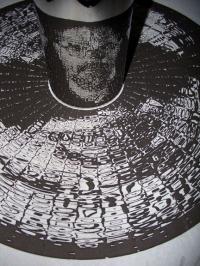
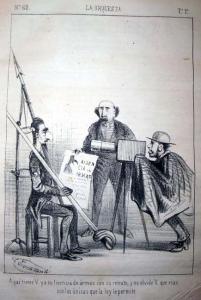
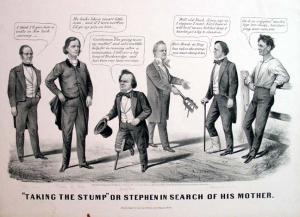
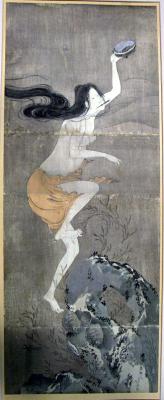
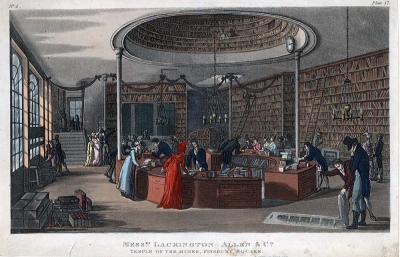
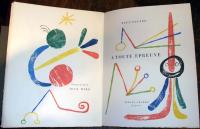
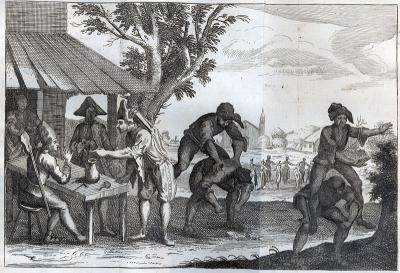
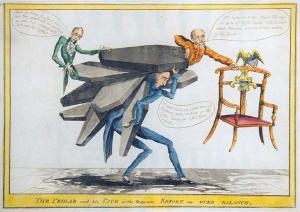
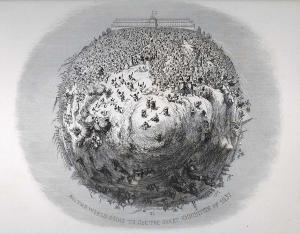
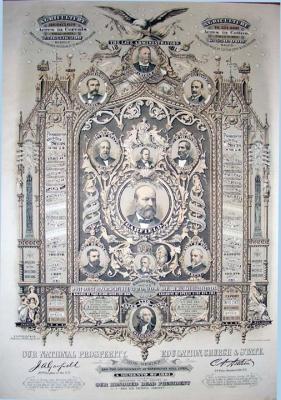
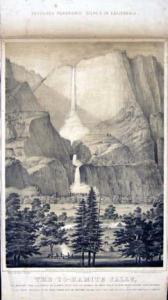
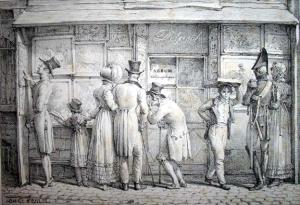
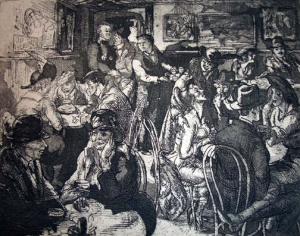
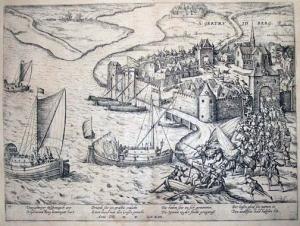
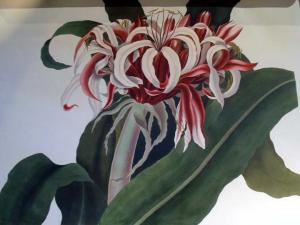
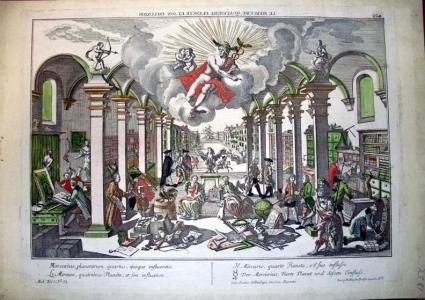
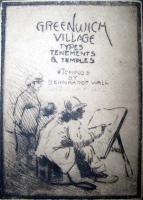
Recent Comments